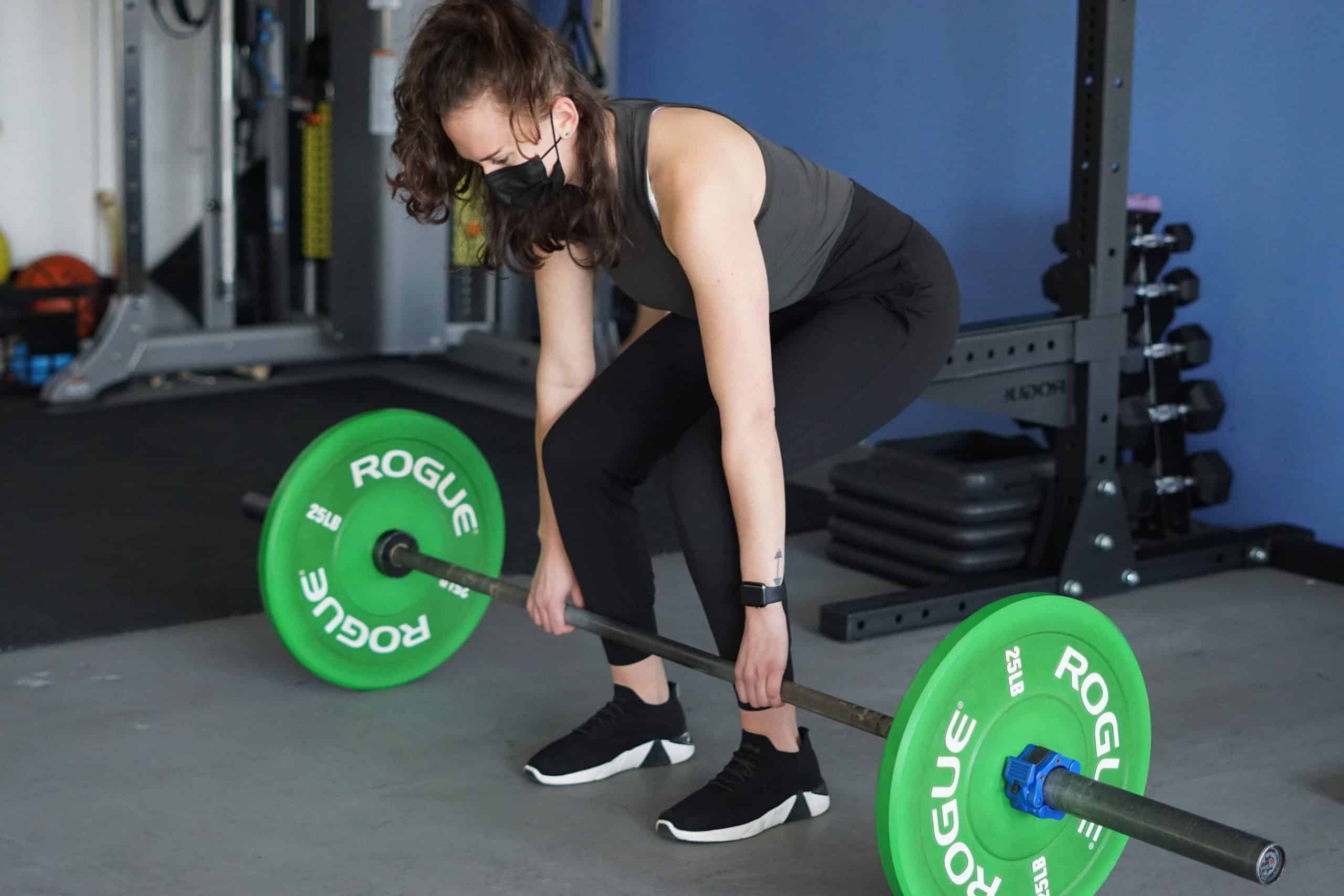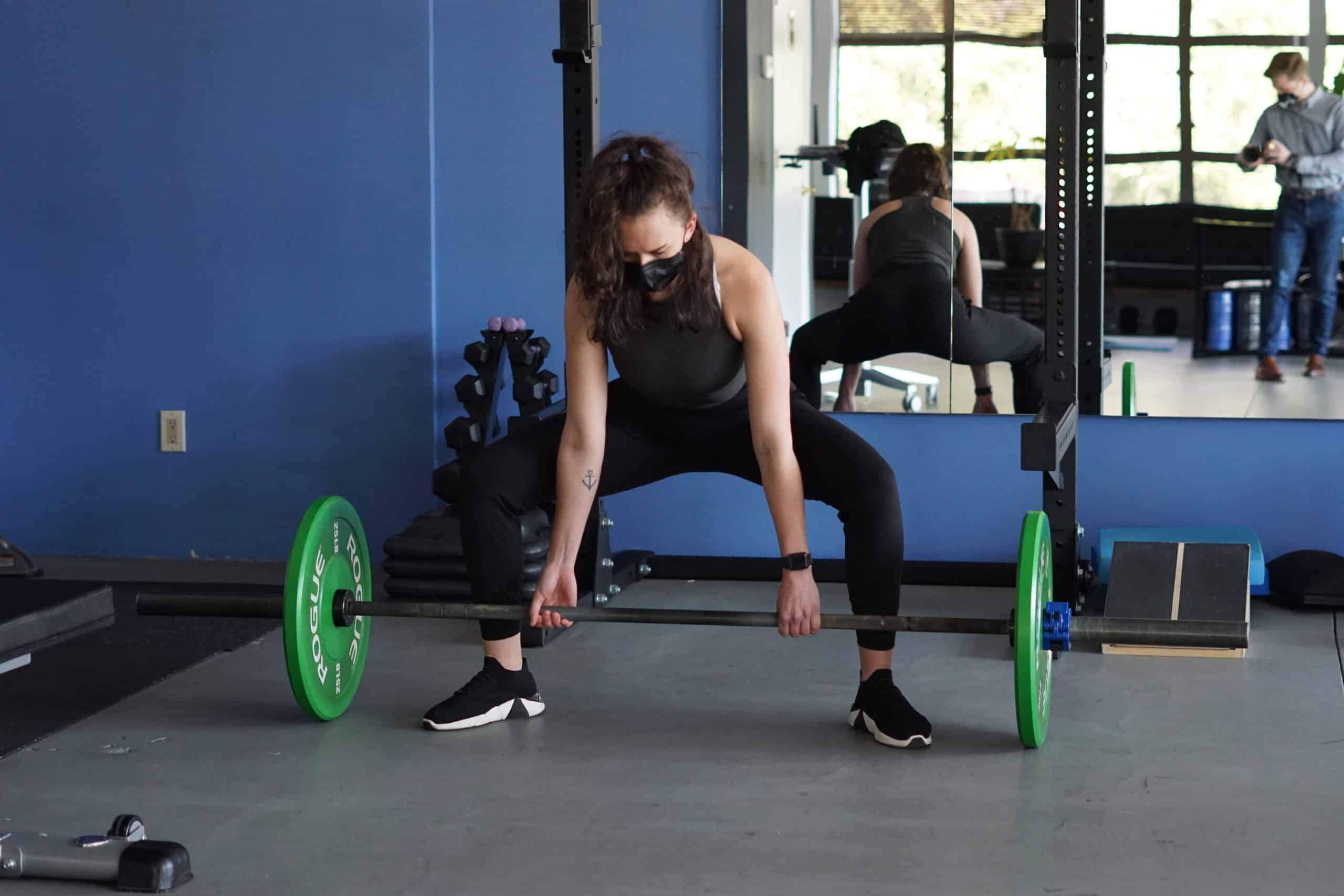Iron Health Blog –
Deadlift Variations or Which Lift is Right for You
By: Allison Scova, DPT
As an avid weightlifter, I have followed many online lifting programs from highly recognized experts in the fitness industry. But one problem with these programs is they are non-specific for the individual buying it. There are so many variations to different lifts, but we must consider a few things when choosing the right lift for a client and ourselves. First, we have to ask what are the client’s goals. Is their goal to chase 1RMs? Is it hypertrophy? Are they trying to increase flexibility? Next it is important to evaluate the anatomy of the individual. Some lifts, while best for 1RMs, may increase stress on the hips and cause impingement. Finally, it is crucial to consider the client’s injury history and current injuries. If someone is coming to me with hamstring tendinopathy, it’s probably best I steer clear of stiff leg deadlifts for the time being.
I see it too often as a Physical Therapist – a weightlifter with an extensive injury history trying to max out on a lift that their body isn’t meant for. I never like telling someone that they can’t do something. So let’s get one thing straight – if your Physical Therapist tells you that you’ll never be able to deadlift again because of your herniated disc…ABORT and find a new PT. That being said, we all have different anatomy. Therefore, my squat stance does not equal your squat stance and the same applies to all other lifts. Most gym injuries occur when load exceeds the
capacity of the joints and muscles. If you are continually forcing your joints into ranges of motion that you don’t have, or forcing your muscles to perform at a capacity they can’t, the risk for injury increases. Sometimes as weightlifters we are trying to fit square pegs into round holes, and this just doesn’t work for longevity in the weight room.
In this 2 part series, I will discuss the different deadlift variations and which injuries or body types they suit best.
1. Conventional Deadlift
The conventional deadlift is one of most popular deadlifts incorporated into a strength program. Due to the alignment of the shoulders, hips, and knees in a “hamburger stack”, this deadlift almost works your glutes, hamstrings, and erector spinae equally. Less hamstring flexibility is required due to the large amount of knee flexion and greater demand is placed on the quads than stiff-leg and RDL. The conventional deadlift accentuates the concentric phase of the lift; therefore if lifting heavy loads is your goal this deadlift is for you! There is a fair amount stress placed on the erector spinae, so if you have a history of back pain make sure you have good core stabilization before participating in this lift. It may also be challenging to complete this lift with heavy loads if you have long femurs, which increases demand on the erector spinae. But overall, this lift gives you the most bang for your buck and is achievable for most injuries and body types.

Best suited for: lifting heavier loads (hello PRs!), decreased hamstring flexibility, distal hamstring strain/tendinopathy
Beware: long femurs, lower back pain and back injuries
2. Sumo Deadlift
Hello glutes! This lift has undoubtedly increased in popularity over the years. The main reason this lift has gained recognition in powerlifting is because the distance from the bottom of the lift to full lock out is shorter than the conventional deadlift. What does this mean for powerlifters? They can lift more weight over shorter distances. The sumo deadlift, like the conventional, starts with the weight on the ground and emphasizes the concentric part of the lift. Whether your goal is to max out at heavy loads or hypertrophy your glutes, the sumo deadlift achieves both.
Unlike the conventional and stiff-leg deadlift, this lift works the quads and glutes with less emphasis on the hamstrings. Because of the upright torso, there is less demand placed on the hamstrings and erector spinae. However, the stress it imposes on the hip joint is the main downfall to this lift. The sumo requires a large amount of abduction and external rotation, and when combining these motions with hip flexion can cause lateral impingement in the hips. Make sure you have adequate hip mobility before performing this lift!

Best suited for: decreased hamstring flexibility, low back pain and back injuries, hamstring strain/tendinopathy, longer femurs Beware: hip pathology or pain, groin/adductor strain, general decrease in hip
mobility
Stay tuned for the next blog that will cover the last 3 deadlift variations as well as the lifts recommended for each injury and body type!
